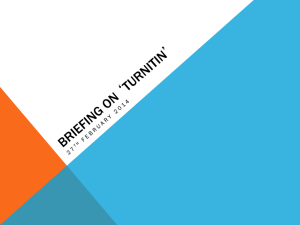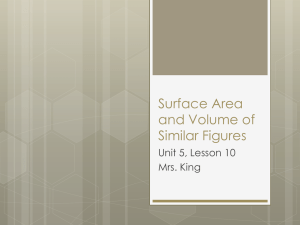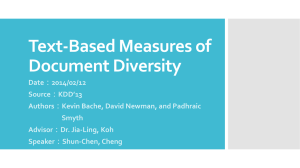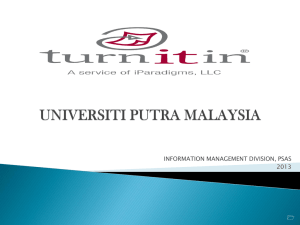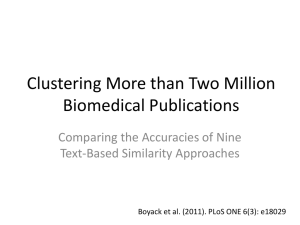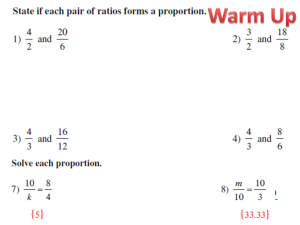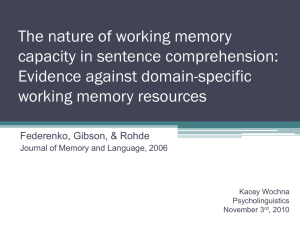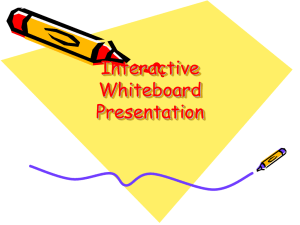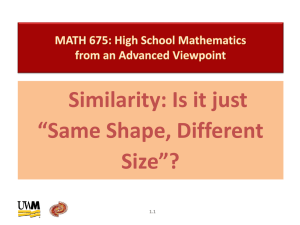Videocases for Learning and Teaching Geometry
advertisement
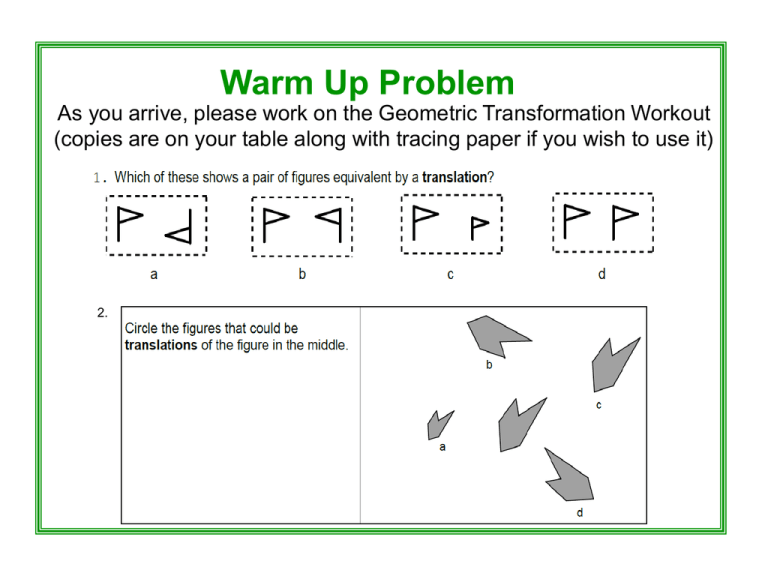
Warm Up Problem As you arrive, please work on the Geometric Transformation Workout (copies are on your table along with tracing paper if you wish to use it) 2. Using VideoCases to Develop Teachers’ Conceptual Understanding of Mathematics Nanette Seago, WestEd Patrick Callahan, Affiliation? Mark Driscoll, EDC Johannah Nikula, EDC Jennifer Jacobs, University of Colorado Session Agenda • Overview of Project • Geometric Transformation Workouts • View and Discuss potential video clips for Definition Module • Using videocases in PD • Q&A Learning and Teaching Geometry Project Overview • In year four of a 5-year National Science Foundation project • Developing videocase-based, PD materials – 1 Foundation Module – 4 Extension Modules • Staff: Nanette Seago (PI), Mark Driscoll (Co-PI), Jennifer Jacobs, Johannah Nikula, Patrick Callahan, Hilda Borko • Advisory Board:Harold Asturias, Tom Banchoff, Phil Daro, Megan Franke, Karen Koellner, Glenda Lappan, Hung-Hsi Wu • Evaluation Team: [Horizon Research, Inc.] Dan Heck, Kristen Malzahn, Courtney Nelson LTG Materials • Built around authentic video clips from grades 6-8 classrooms • Focus on similarity and its mathematical use in teaching • Modular in design--coherent, sequenced set of videocase professional development sessions • Well-specified facilitator support materials: – Explicitly communicates the underlying core principles – Clearly laid out rationale for principles – Detailed sample agendas and mathematical notes designed with an eye toward making the design and values explicit • Foundation module: ten, 3 hour sessions A sequence of learning experiences LTG Foundation Module Map LTG Foundation Module Goals • Help teachers develop a deep, flexible understanding of similarity • Promote a dynamic, transformational view of similarity, and geometry in general. • Provide insight into students developing conceptions of similarity • Equip teachers with specialized content knowledge in the area of similarity Specialized Content Knowledge (SCK) “The mathematical knowledge and skill unique to teaching- not typically needed for purposes other than teaching. This work involves an uncanny kind of unpacking of mathematics that is not needed--or even desirable--in settings other than teaching. Many of the everyday tasks of teaching are distinctive to this special work.” For example: • Evaluating the plausibility of students’ claims (often quickly) • Giving or evaluating mathematical explanations • Choosing and developing useable definitions • Recognizing what is involved in using a particular representation • Linking representations to underlying ideas and to other representations (Ball, Thames, & Phelps, 2008) Introduction to GTWs The 2007 8th grade NAEP item below was classified as “Use similarity of right triangles to solve the problem.” Only 1% of students answered this item correctly. The 1992 12th grade NAEP item below was classified as “Find the side length given similar triangles.” Only 24% of high school students answered this item correctly. Common Core Standards • Need to list the ones that fit GTW Discussion 2. Task 3 13 Intro to Use of VideoCases in LTG • Not intended as models • Used to analyze the dynamic nature of classroom interactions • Used to generate discussion, conjectures and evidence • Intended to respect teachers, students and teaching • Use of lesson graphs to situate the video clips within the context of a whole lesson Extension Modules I. II. III. IV. Mathematical Definition Through Similarity Communication & Language in Similarity Using Representations and Tools in Similarity Justifying and Proving Geometric Similarity Definition Module • Draft Ideas – Goals • Determine the components and implications of mathematical definitions through the example of similarity • Examine how mathematical definitions are introduced, developed, and included in classroom lessons through the example of similarity. – A few mathematical punch lines: • There is not one correct definition of similarity, but there are incorrect definitions • Definitions differ in their application and context • A part of practice is being able to analyze, compare, and work with the different definitions floating around in the classroom • Geometry is dense with vocabulary, so the idea of definition is highlighted Definition of Similarity Used in the Foundation Module Two figures are similar if one is the same as an enlargement or reduction of the other. – “the same” ~ “congruent” or “can be matched by rotating, translating, and/or reflecting.” – “an enlargement or reduction” ~ “stretching or shrinking” or “dilating a figure where the distance from the center of dilation can be multiplied by a fixed scale factor.” Potential Video Clips • Series of three video clips from an 8th grade classroom in Arkansas that the staff thinks have potential to fit within the Definition Module. • Examine these clips with an eye towards their use in furthering teachers understanding of the specialized knowledge in defining similarity Terri Video Clips Video Clips Discussion • What opportunities to learn do the use of these three clips offer teachers around mathematical knowledge specific to teaching? • Do you see other learning opportunities within these three clips? Q&A Stepping Back • A central goal of the Foundation Module is to support teachers to help their students progress from using informal definitions of similarity to using increasingly precise definitions. Currently, we are planning to show the Melanie clips early on in the Module. Given the goal of the module, do you think this is a wise decision? Why or why not? • Pilot/Field-test sites needed!
